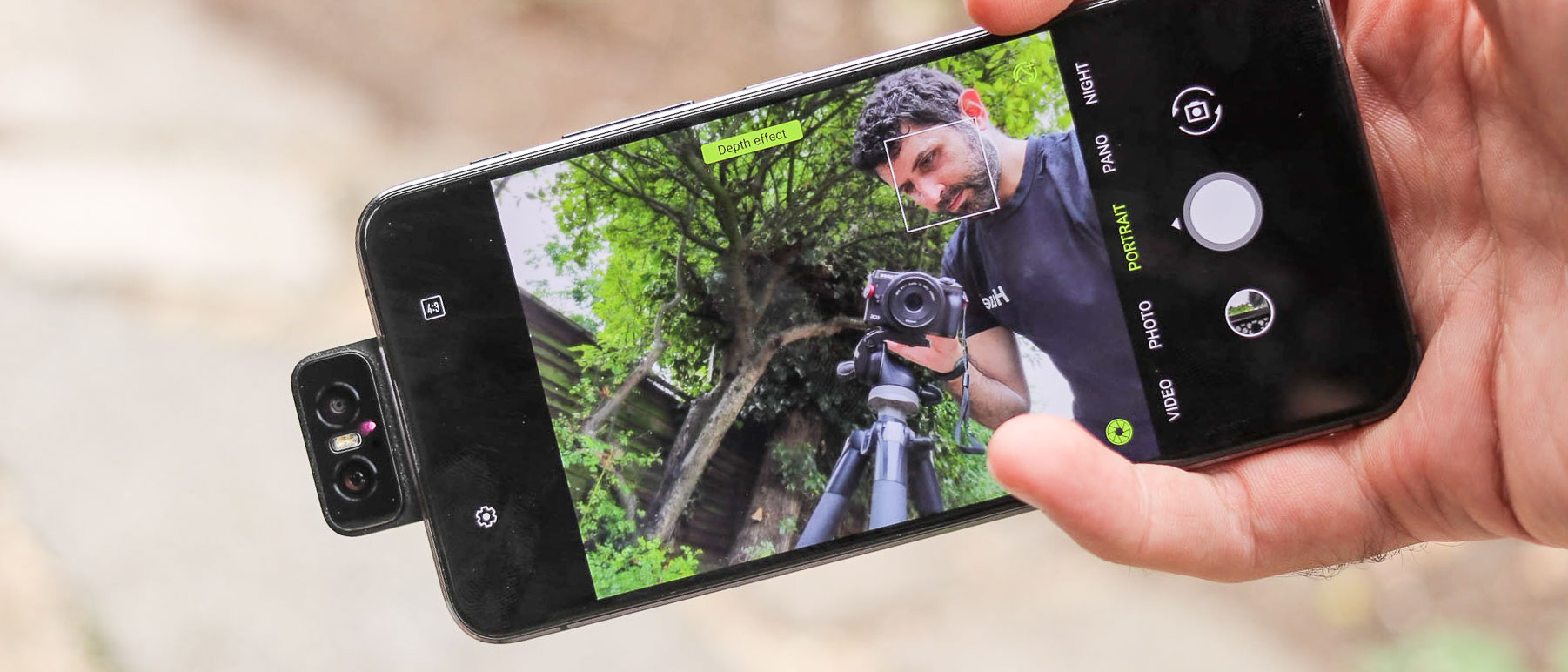Digital Camera World Verdict
The Zenfone 6 is not the easiest phone to find in stores, but it is worth hunting out as it’s a fantastically-priced smartphone. If you do find one, its 5000mAh battery borders on class-leading, the phone’s screen, while not OLED, is still immersive and the power under the hood is flagship quality in every respect. The Zenfone 6’s party trick, the flip-out camera is also compelling. It delivers versatility with its wide/ultrawide lens combo and grabs incredibly sharp selfies. While it isn’t the best sharpshooter across the board, as a sub-£500/$500 package, the Zenfone 6 is still easy to recommend.
Pros
- +
The flip-out camera is incredibly versatile
- +
Up to two days of battery life
- +
Virtually bezel-free display
Cons
- -
No optical zoom
- -
The rear camera is good, not great
- -
Camera module feels fragile
Why you can trust Digital Camera World
The Asus Zenfone 6’s camera isn’t the first phone to feature a mechanical flip-out camera; the OnePlus 7 Pro and Oppo Reno 10X Zoom both pack pop-up selfie camera. However, it’s one of the only phones around to flip its rear camera through 180 degrees. What that means is it takes selfies with its primary camera, which has a resolution of 48MP at the wide-angle, or 13MP at the 125-degree ultrawide angle.
The Zenfone 6’s camera also features some smart modes that take advantage of that fact. For example, the panorama mode automatically rotates the camera through 180 degrees, capturing pin-sharp, massive 2112 x 2048 (24MP) resolution panorama photos. The moving camera can also track objects, rotating to keep them in the frame.
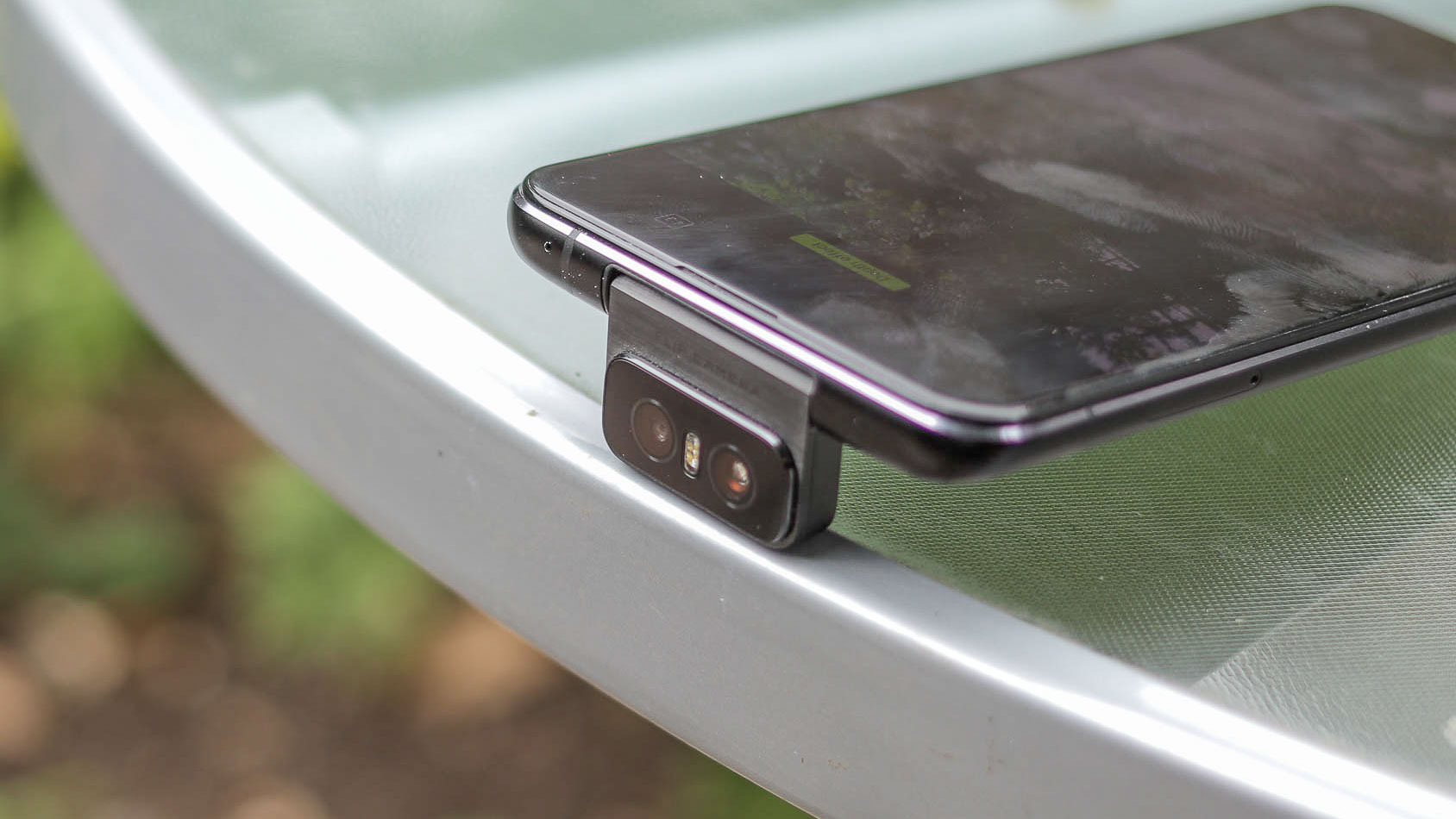
Inside, the Zenfone 6 is loaded up with flagship hardware, which includes a Qualcomm Snapdragon 855, the same chipset as found in the much pricier Samsung Galaxy S10 and the Sony Xperia 1. With up to 256GB storage and a bigger battery than any mainstream flagship - 5000mAh, on paper, its specs impress.
Asus Zenfone 6: Specs and features
Announced in May, and having been on sale in some territories a while, the Asus Zenfone 6 is now at last on sale in selected stores in Europe and America - and is a contender for our guide to the best camera phones, a possible our list of best budget camera phones.
The Zenfone 6 is well protected, thanks to its Gorilla Glass 6 display, which measures 6.4-inches. The phone also ships with a hard plastic case in the box, for a bit of extra peace of mind. The bevelled, blasted metal sides don’t feel as slick as the polished frame of the Huawei P30 Pro or the Samsung Galaxy S10 Plus, and given its giant battery, the Zenfone 6 is pretty chunky. Despite this, with its curved glass back, the phone still manages to sit well in hand and fit, albeit snugly, in our pocket.

The screen technology behind the Zenfone 6’s display is LCD as opposed to AMOLED, found in most flagships. This means it isn’t as sporting the more coveted under-display scanners. The Zenfone 6 isn’t waterproof either and doesn’t offer wireless charging. What it does do, however, is introduce the latest version of Asus’ interface, ZenUI 6, which runs on top of Android 9. The new version of Zen UI is a very tasteful take on Google’s operating system, app support is excellent, and the phone even features a hotkey that can be customized to fire up Google Assistant and more.
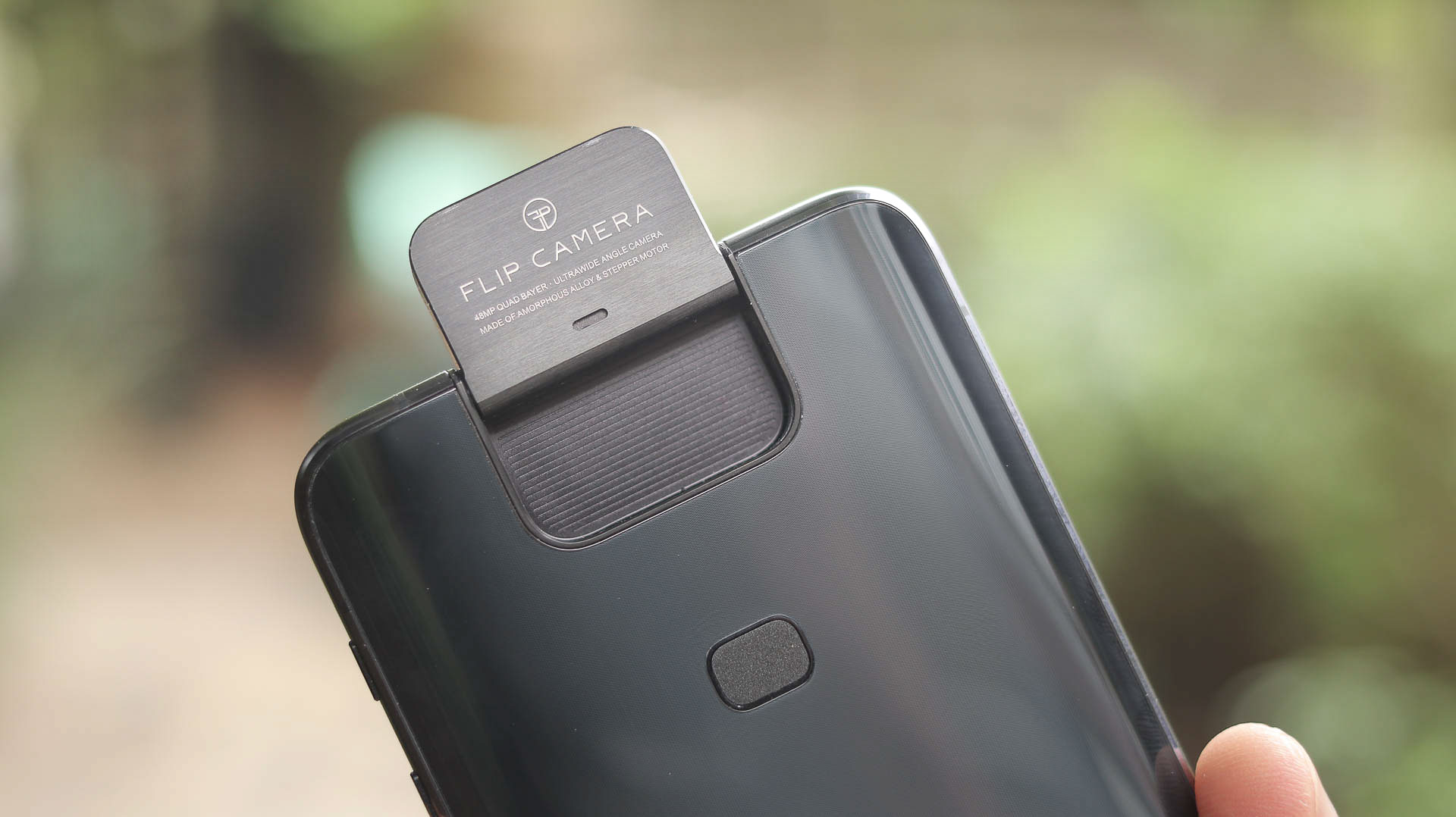
Looking at the Zenfone 6 from the front is an all-screen joy, thanks to the fact it sports a 92% screen-to-body ratio, and, as mentioned, no notch. Owing to the flip-around camera, phones like the Zenfone 6, there’s no need for a selfie camera, and the result - a fascia that has tiny bezels - makes phones iPhone XS Max and the Pixel 3 XL, which have giant cutouts at the top look nothing short of dated.
One feature that doesn’t quite feel cutting edge is the rear fingerprint scanner. With similarly priced phones like the OnePlus 7 sporting the more coveted under-display scanners. The Zenfone 6 isn’t waterproof either and doesn’t offer wireless charging. What it does do, however, is introduce the latest version of Asus’ interface, ZenUI 6, which runs on top of Android 9. The new version of Zen UI is a very tasteful take on Google’s operating system, app support is excellent, and the phone even features a hotkey that can be customized to fire up Google Assistant and more.
Asus Zenfone 6: camera specs
The Asus Zenfone 6 has a dual camera around the back which, as mentioned, doubles up as the selfie camera. The flip-out module packs a dual-LED flashlight as well.
The main camera array features a primary 48MP camera (Sony IMX586 sensor, 0.8µm pixels, f/1.79 lens, 26mm lens, 1/2.0” sensor) and a 13MP ultrawide camera (f/2.4, 125mm). Neither pack optical image stabilization (OIS) and the primary camera features phase detection and laser autofocus.
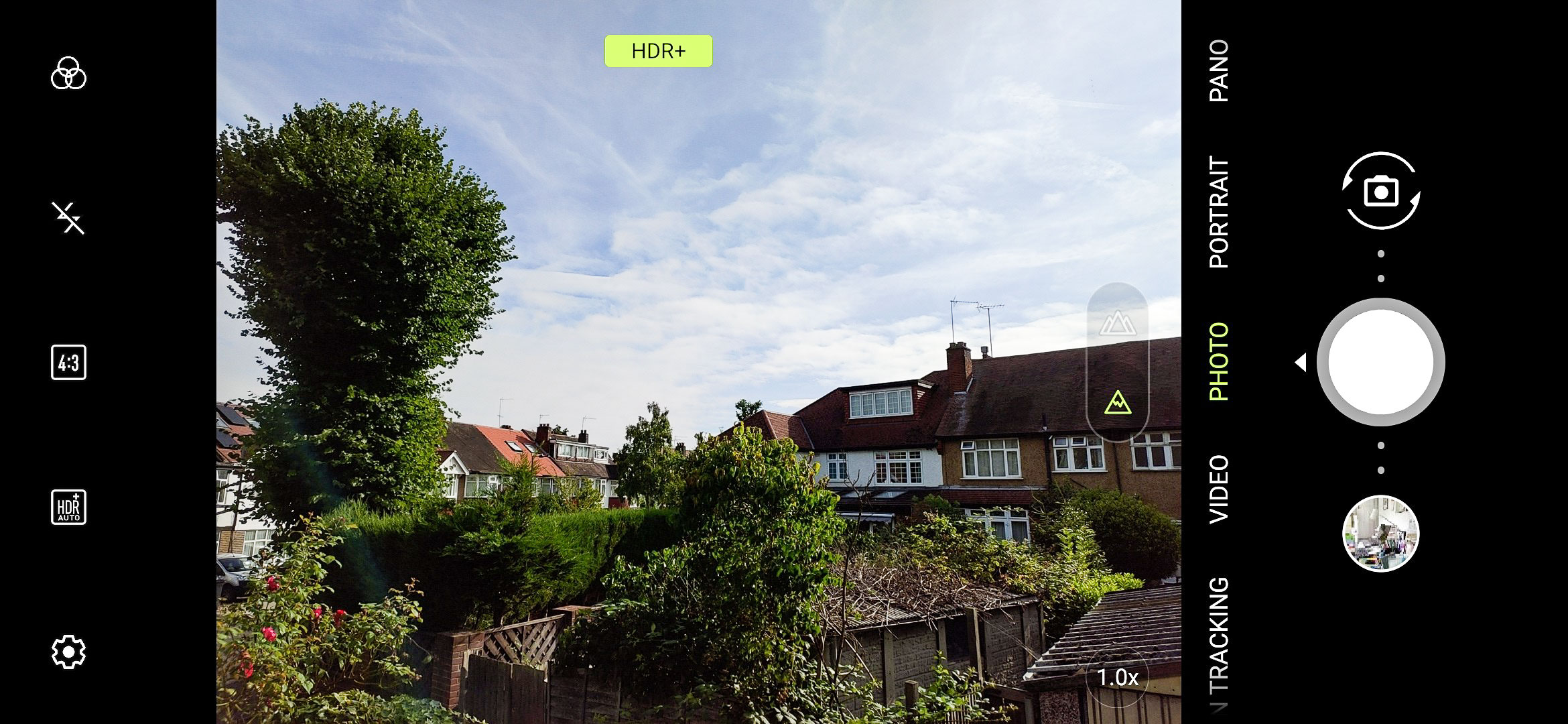
You’re off to a good start when it comes to the shooting modes on the Asus Zenfone 6, with time lapse, slo-mo, motion tracking, video, photo, portrait, panorama, night and pro modes all accounted for.
What’s more impressive is that the articulating camera’s position can be controlled by dragging the ‘rotate camera’ button up and down, or using the volume keys.
This articulation delivers a considerable amount of control when framing shots, comparable to the extra scope a flip-out screen gives photographers who are using a digital camera. It can also be used in conjunction with the Zenfone 6’s Pro mode for creative, long exposure shots that other phones just wouldn’t have been able to capture.
Asus Zenfone 6: camera performance:
When shooting stills, despite its 48MP sensor, the Zenfone 6 shoots 12MP images, grabbing detail from 4 pixels and creating one ‘superpixel’. This 'pixel binning' technique works to great effect - broadening the tonal range and reducing noise in tricky environments, but you can override and fire up 48MP shots it if you want that extra bit of detail, and the lighting is on your side.
Also fired up by default: AI scene detection and auto HDR, both of which we decided to keep fired up for the most part after spending a week with the phone.
In certain conditions, the Zenfone 6 can outperform significantly pricier phones. For example, its auto HDR mode is good, and dynamic range in brightly lit conditions wipes the floor with the likes of the Sony Xperia 1, which costs substantially more!
Skin tones are also pleasantly muted when compared to some smartphones like the Huawei P30 Pro, indoors (above), and outdoors (below), and this is true across both the wide and ultra-wide camera. That said - be sure to turn off auto HDR if you’re concerned about ghosting. As you can see in this image, the second subject from the right was captured mid-blink and it’s unsalvageable.
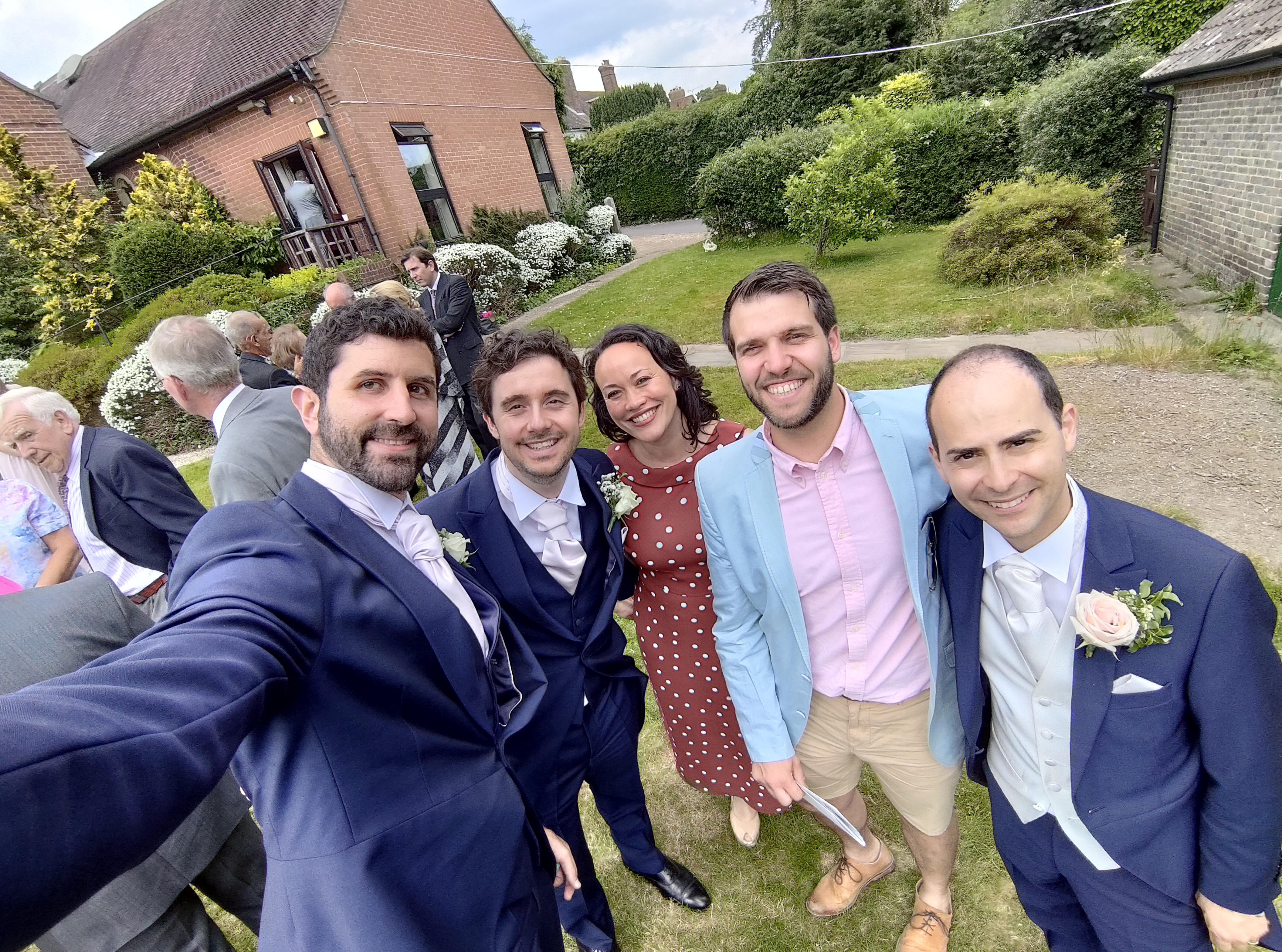
Also impressive for the price is the Zenfone 6’s portrait mode. It offers a nice wide-angle and accurately divides the foreground, focus point and background, nine times out of ten.
When the lights drop, the Zenfone 6 ramps up the ISO in automatic mode or you can fire up its long exposure night mode, which uses computational photography. Even with Night Mode fired up, it can’t outperform the likes of the Google Pixel 3 or 3A; however, it does a better job than an iPhone Xs, which isn’t bad going given its price.
Macro shots captured on the Zenfone 6 look good, and while it doesn’t have as close a minimum focus range as the P30 Pro, it still delivers accurate focusing for the most part, with shallow depth of field, and plenty of detail at the focal point.

One thing worth noting is that it struggles with yellows, as illustrated in the above example of the buttercup, with nuance being lost in favor of boosted saturation. For yellow-heavy shots, we had to turn off the auto scene recognition feature to get the best from the phone’s automatic mode.
Despite this quirk, if you’re a fan of more muted saturation generally, then you’ll be well-served with the Zenfone 6 in automatic mode. Additionally, if you’re comfortable shooting in RAW and editing your photos in Lightroom or Photoshop afterwards, this phone is something of a champ if the lighting is on your side.

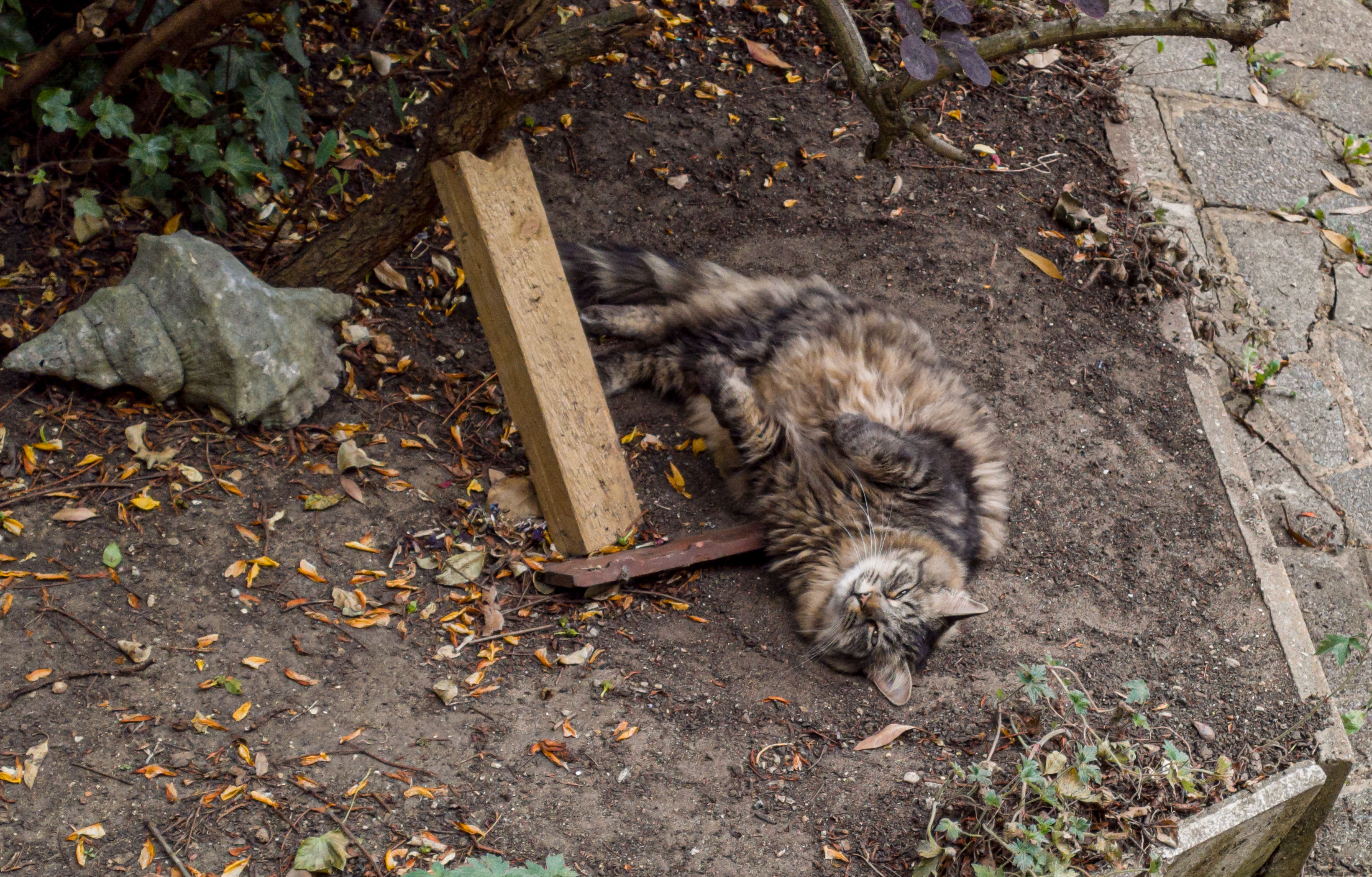
The above is an example of a RAW shot that was taken at the full 48MP resolution, edited in Photoshop and cropped in to. Below, you can see a larger version of the right-hand image. It’s far from perfect, but considering this phone doesn’t have an optical zoom, the ability to aggressively crop into wide shots and still get a usable 3280 x 2096 (7MP) image is great going for a smartphone that costs less than half the price of an iPhone.
As for the ultrawide angle camera, it doesn’t perform brilliantly in low light, but for everything else, it’s a convenient addition that adds versatility. Specifically, when it comes to fitting everyone in the shot for selfies.
The Zenfone 6’s video quality is solid, and the fact it can shoot at up to 4K 60fps adds to its flagship credentials nicely too. It employs EIS (electronic image stabilisation) to keep things steady and that works across resolutions unlike on some smartphones which is also great, though 4K 60fps recording is capped at 5 minutes. The only area the phone falls down when it comes to video is its low light performance, with noise creeping in as the lights drop sooner than on some other flagships.
Asus Zenfone 6: sample images


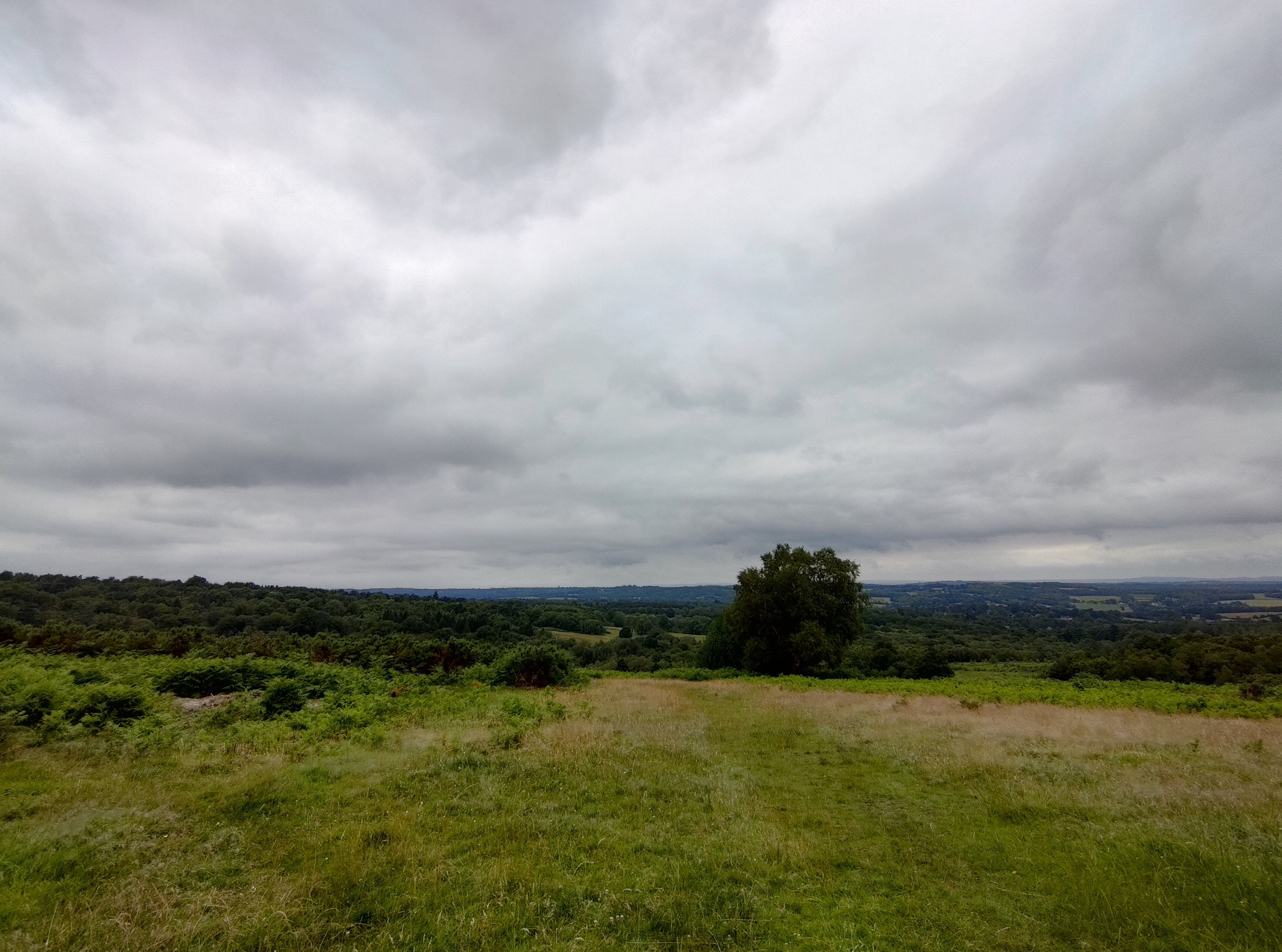



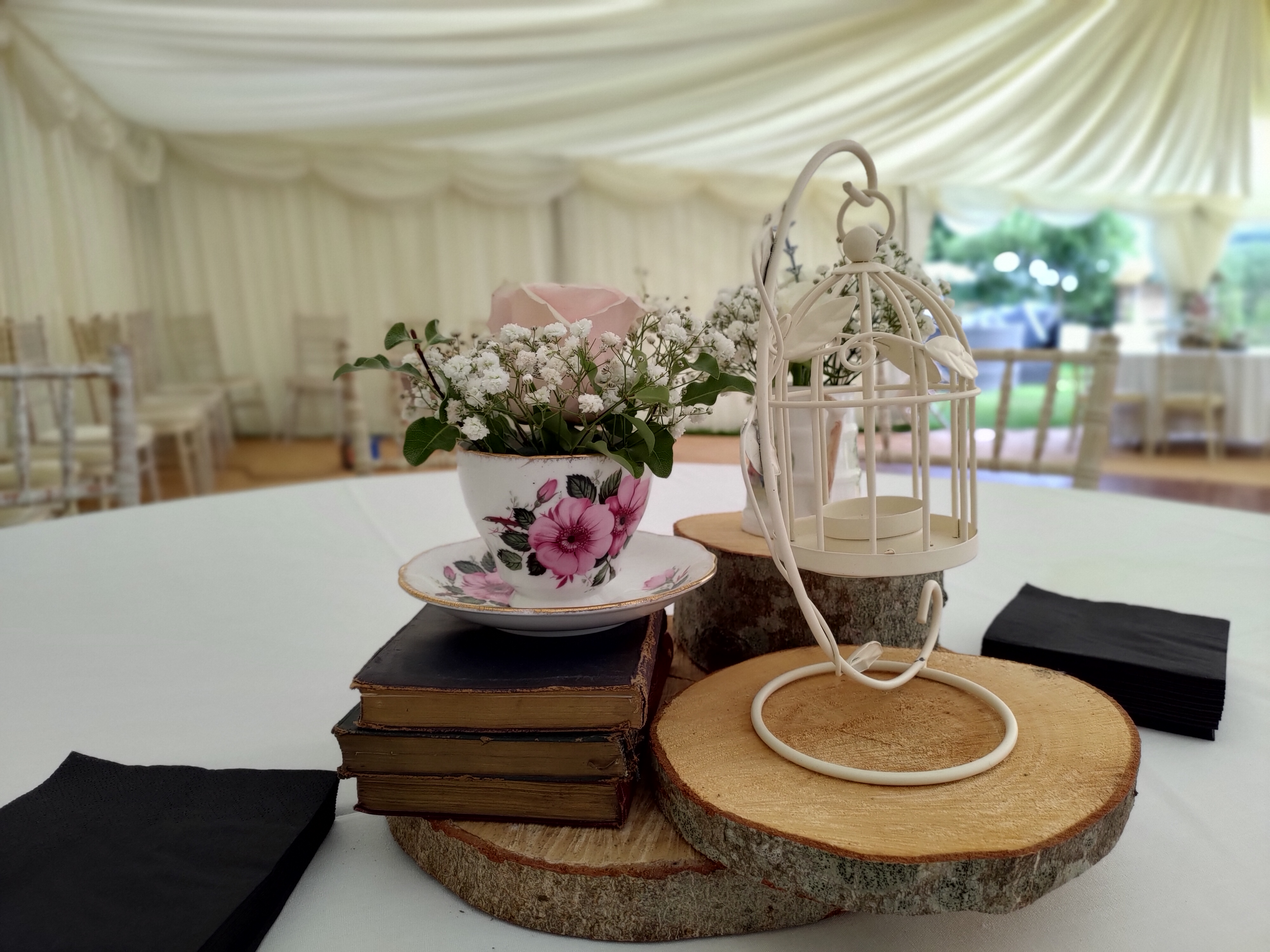
Asus Zenfone 6: OS, battery and connections
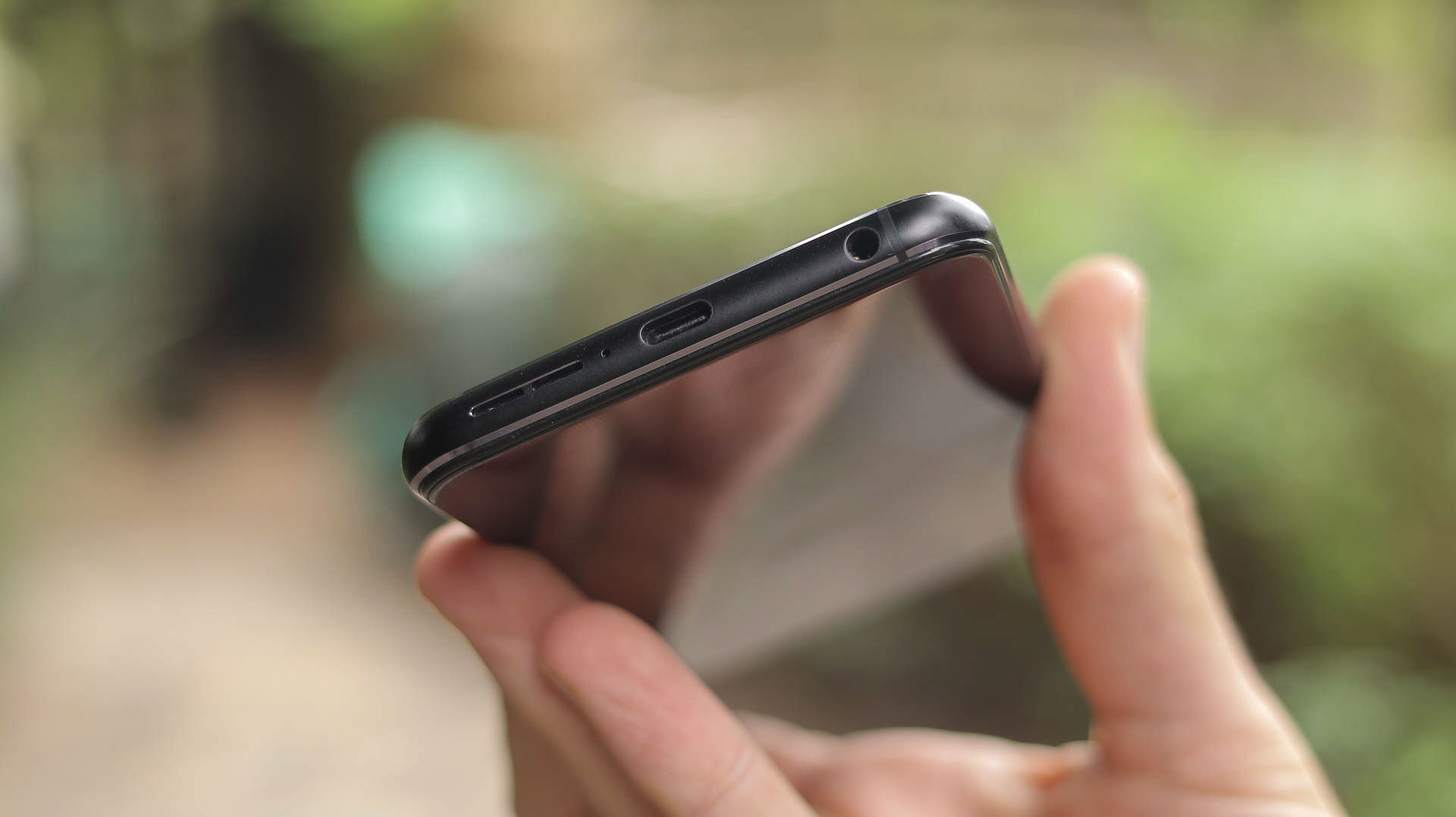
The Zenfone 6 ticks almost every flagship checkbox around. App support is excellent, and while there’s no under-display fingerprint scanner, the rear scanner works quickly, and can fire in conjunction with face unlock to get you into your phone fast. There’s also NFC, Bluetooth 5, 4G and a lot of power under the hood, as well as microSD card support, and dual SIM slots.
The phone also has a headphone jack, which is something of a unicorn for flagship phones these days, and the 5000mAh battery easily lasts over a day. This is also combined with 18W Quick Charge 4 too, though, with such a big battery, if you want to charge up to 100%, we’d still recommend you do this overnight.
Asus Zenfone 6: Verdict
The Zenfone 6 is one of those phones you can fall in love with if you don’t mind getting to grips with its nuances. The flip-out camera may give us the heeby jeebies - moving parts always do. For photographers, though, it can enable shots that traditional smartphones just can’t capture.
The camera’s RAW capabilities mean that in good light, you have a huge amount of scope to play with images captured, and the rest of the specs check out nicely, on paper and in real life.
We would have liked the camera to have had OIS, and of course, a telephoto 5x zoom, but considering how much it costs, the Zenfone 6 still delivers great value and a lot more versatility than the comparably priced OnePlus 7.
Read more:
• Best selfie sticks for your smartphone
• The best iPhone tripods
• The best gimbals for your iPhone, GoPro and camera
• The best phone cases to protect your camera phone
Basil Kronfli is a freelance technology journalist, consultant, and content creator. He trained in graphic design and started his career at Canon Europe before moving into journalism. Basil is also experienced in video production, independently running the YouTube channel TechEdit, and during his time at Future, he worked alongside the Digital Camera World team as a senior video producer.
